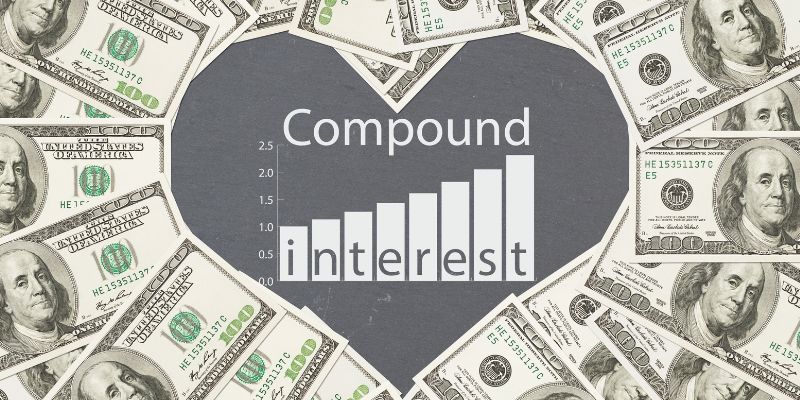Stock represents a fractional ownership interest in the company it represents. Investors may find knowing the company's profit margin about the stock price useful. The price-to-earnings (P/E) ratio is a widely used metric for valuing businesses by financial experts and investors.
In its most basic form, the ratio indicates the price at which investors are willing to purchase company shares in exchange for its present or expected earnings. It reveals how much effort is put in for how little return. This post dive deep into the price-to-earnings ratio (P/E) concept and its significance in evaluating potential stock investments and the average p/e ratio by industry.

What's a P/E Ratio?
The Price Earnings Ratio (P/E Ratio) measures how much a company's stock price has increased or decreased relative to its per-share earnings. Popular among investors, this ratio helps them gauge the worth of a business. You may gauge market sentiment by looking at the P/E ratio, the amount of money an investor would have to part with in exchange for one dollar of the company's current profits.
When determining a stock's worth, investors place a premium on a company's earnings since they provide insight into its current and future profitability. If the company does not expand and earnings remain at their current level, the P/E can be understood as the number of years how long a share of stock bought at the current price needs to rise before it breaks even.
What Is A Good P/E Ratio?
What's a good p/e ratio? Well, no ratio is inherently better or worse than any other. The only way to determine whether a ratio is high or low is to compare it to other companies in the same industry or their performance over time.
For the ratio to be useful, some background information is required. Nonetheless, a high or low earnings-per-share ratio may indicate underlying strengths or weaknesses in the business or the investment. If the ratio is high, the stock is overpriced.
Even if the price per share is high now, a high ratio typically indicates that the stock is a growth stock, suggesting that it has the potential to do well in the future. Growth stocks have the potential to be dangerous investments due to their volatility. Stocks with low P/E ratios are cheap. Since the company is growing and earning money, but its stock is cheap, this is good news for investors.

What Is A Good P/E Ratio For Stocks?
To determine if a stock is overpriced or underpriced, investors often look at its price about its earnings per share (P/E ratio). A stock's P/E ratio is useful, but more information is needed to determine what constitutes a good P/E ratio.
The P/E ratio on its own is meaningless. Comparing P/E ratios among businesses in the same industry is the most meaningful application of this measure. Fundamental analysis of this sort is extremely widespread. When the P/E ratio is high, investors pay a greater price for each dollar of annual profit.
From a purely price-to-earnings standpoint, investors should avoid stocks with a high PE ratio. An elevated P/E ratio indicates buyers are forking more cash for each dollar in annual earnings. Simply looking at the price-to-earnings ratio suggests that investors should steer clear of stocks trading at a high PE.
What Is A High P/E Ratio, Is A High P/E Ratio Good?
Companies having a high Price Earnings Ratio are frequently categorized as growth stocks. As a result, investors are more optimistic about the company's prospects and prepared to pay a higher price per share in anticipation of continued profit growth.
However, growth stocks tend to be more volatile than other stocks, which puts more pressure on companies to perform well to justify their higher price. It means that buying growth stocks will be considered a riskier option. Stocks having a high price-to-earnings ratio may also be overpriced.
Is Negative P/E Ratio Good?
The P/E ratio can help with valuation but must be handled carefully. The temptation to label a company with a high P/E ratio overvalued is strong. A company's greater valuation is warranted if it produces strong earnings growth that leads to a higher share price.
Similarly, if earnings growth for a firm trading at a low P/E ratio turns out to be stronger than projected, the share price could rise. Or the dividend yield attracts investors, leading to a rise in demand for dividend-paying shares and a consequent increase in the stock price. The low P/E could indicate financial distress or that the company operates in a cyclical industry set to experience a downturn.
P/E Ratio High Or Low Better?
The price-to-earnings ratio (P/E ratio) is an easy metric to determine whether a stock is fairly priced. Therefore, the lower the P/E ratio, the better it is for the company and investors.
The ratio of a company's stock price to its earnings per share is the measure in question. It's not a good idea to compare the P/E ratio of a technology firm with that of a consumer staples company. A better way to put it is that the metric achieves its goal when comparing "like with like."
Conclusion:
What is PE ratio, what is a good PE ratio, what is a high or low p/e ratio, and how is it employed in investment strategies were covered in this article. Knowing the P/E ratio and how to utilize it to analyze share prices is important knowledge for investors.
However, there are other indicators to consider. It's not sufficient on its own and can't be used to compare businesses in different industries. However, it is a useful tool for determining whether or not a stock is a good value.




